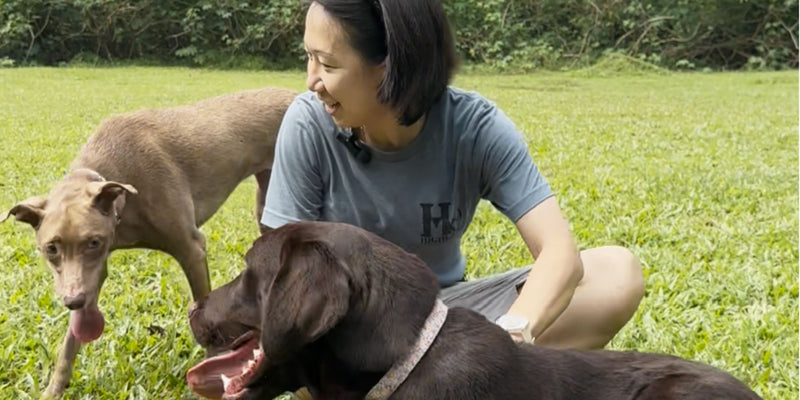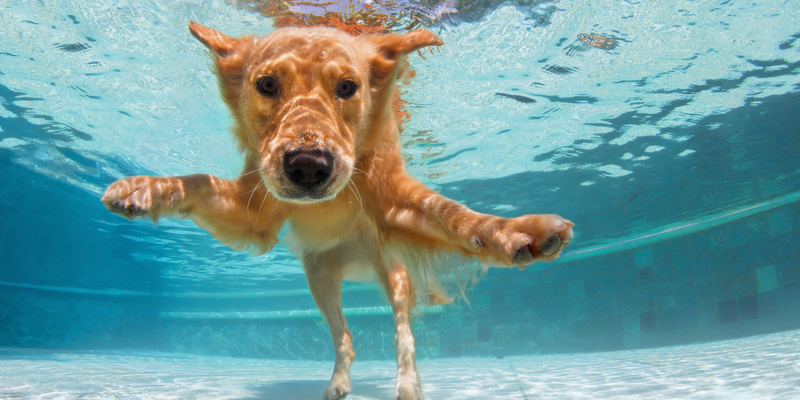Assistance Dogs Guiding the Way with Bark of Duty
November 02, 2023

Dogs have been our loyal companions for thousands of years, offering comfort, support, and unwavering love. However, some dogs go above and beyond as true heroes, providing essential assistance to individuals with disabilities. These extraordinary canines, known as assistance dogs, are more than just pets; they are trained professionals who help their human partners lead fuller and more independent lives. In this article, we'll explore the world of assistance dogs, the vital roles they play, and the incredible difference they make in the lives of those they serve.
In Singapore, "Bark of Duty" stands at the forefront, paving the way as the nation's first Assistance Dog training school, guided by the passion and expertise of Christine, a dedicated dog trainer who is changing lives, one paw at a time. Learn more about her here!

What is an Assistance Dog?
An Assistance Dog, such as those trained at Bark of Duty, is a meticulously trained canine companion that performs a range of tasks to aid individuals with disabilities. These tasks are customized to meet the unique needs of each person, ultimately promoting independence and enhancing their quality of life. These incredible dogs extend their support to various domains, including autism, mobility issues, hearing impairments, and even seizure alerts.
While many may be familiar with the concept of guide dogs for the visually impaired, Bark of Duty focuses on a diverse array of Assistance Dogs, each tailored to the specific requirements of their partners.
Misconceptions about assistance dogs.
Assistance Dogs are not the same as therapy dogs or emotional support dogs. While all of them provide comfort and affection in the course of their work, only Assistance Dogs are individually trained to perform specific tasks that must be directly related to their partner’s disability.

Common Types of Assistance Dogs
- Guide Dogs: Guide dogs are perhaps the most well-known type of assistance dogs. They are trained to assist individuals who are blind or visually impaired, helping them navigate their surroundings safely and independently.
- Mobility Assistance Dogs: Mobility Assistance dogs are trained to perform various tasks to assist people with mobility challenges. These tasks may include retrieving items, opening doors, or providing balance support.
- Hearing Dogs: Hearing dogs assist individuals with hearing impairments by alerting them to important sounds such as doorbells, alarms, or someone calling their name.
- Medical Alert Dogs: These dogs are trained to recognize changes in their partner's health, such as a drop in blood sugar levels or the onset of a seizure. They can provide timely alerts and even fetch medication or a phone for assistance.
- Psychiatric Service Dogs: These dogs offer crucial support to individuals with mental health conditions like post-traumatic stress disorder (PTSD) and anxiety. They can provide comfort and assistance during moments of distress.
The Training Process
Training an assistance dog is a meticulous and time-intensive process that requires dedication and expertise. The training typically begins when the dog is still a puppy, with socialization and basic obedience training. As the dog matures, they learn specialized skills and tasks tailored to their partner's needs. A significant amount of time, effort, patience and commitment has to be invested to properly raise and train an Assistance Dog. The entire process can take 1.5 to 2 years.
One of the most remarkable aspects of assistance dog training is the ability to recognize and respond to specific cues and needs. For example, a guide dog is trained to stop at curbs and avoid obstacles, while a medical alert dog can sense changes in their partner's body odor.
Bark of Duty’s Assistance Dog Training Program begins with the selection of a well-bred puppy with suitable temperament, purposeful socialisation and obedience training from a young age. Volunteers help to raise the puppy until he or she is matched with a compatible partner. Advance tasks specific to their partner’s needs are taught to the Assistance Dog, and further training is conducted in public spaces to ensure that the dog is able to behave well in public settings while performing its tasks reliably.
The Impact of Assistance Dogs
The impact of assistance dogs on the lives of their partners is immeasurable. These dogs provide not only practical assistance but also emotional support and companionship. For individuals with disabilities, assistance dogs are more than just aids; they are friends and confidants who empower them to lead more fulfilling lives.
Assistance dogs can help their partners achieve greater independence and self-confidence. They reduce reliance on others for everyday tasks, such as picking up dropped items, answering the doorbell, or safely crossing streets. Moreover, the presence of an assistance dog can alleviate feelings of isolation and anxiety.

Meet Atlas: A Pioneering Assistance Dog
Bark of Duty is currently raising and training its first Assistance Dog, Atlas, a one-year-old chocolate Labrador Retriever. Atlas's journey from a lively puppy to a dedicated Assistance Dog can be followed on Instagram and Facebook. Once matched with a suitable partner, he will be the first professionally raised and trained Assistance Dog in Singapore, making history and changing lives.
As Bark of Duty continues its mission to create more Assistance Dogs, they are always on the lookout for suitable puppies with the potential to transform lives. If you know of a young puppy with the heart to make a difference in someone's life, don't hesitate to reach out. After all, every wagging tail, every loyal companion, is a testament to the incredible work of Bark of Duty, and the boundless love that Assistance Dogs bring into the lives of those they serve.

Assistance dogs are more than just skilled companions; they are lifelines for individuals with disabilities. Through their extensive training, unwavering dedication, and boundless love, these incredible dogs transform the lives of their human partners. They empower individuals to navigate the world with greater independence and confidence, proving that the bond between humans and dogs is one of the most extraordinary and powerful relationships in existence.
























